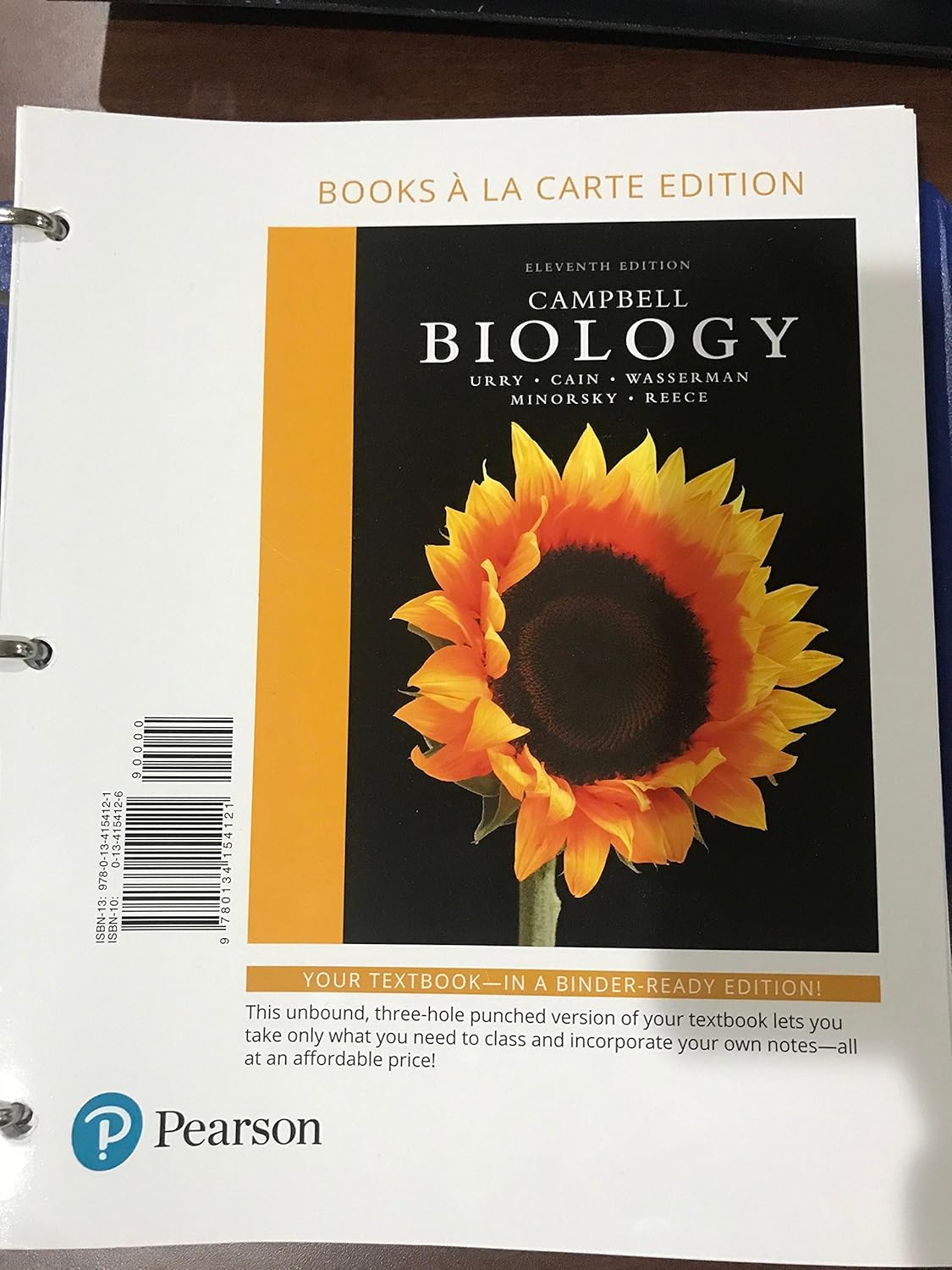About this deal
The impact of genomics and gene editing across biology is explored throughout the Eleventh Edition. Examples show students how our ability to sequence DNA and proteins rapidly and inexpensively is transforming every subfield of biology, from cell biology to physiology to ecology. o Synthesize Your Knowledge Questions at the end of each chapter ask students to apply their understanding of the chapter content to explain an intriguing photograph. Concept 7.6 The cytoskeleton is a network of fibers that organizes structures and activities in the cell Concept 10.3 After pyruvate is oxidized, the citric acid cycle completes the energy-yielding oxidation of organic molecules Skill Development and Practice: The Eleventh Edition engages students by challenging them to apply their knowledge and skills to a variety of hands-on activities and exercises in the text and online.
Make Connections Questions ask students to relate content in a chapter to material presented earlier in the course to help them see how the different areas of biology are connected, from molecules to organisms to ecosystems. to the Seventh Edition. After graduating from Tufts University with a double major in Biology and French, Lisa completed her Ph.D. in Molecular and Developmental Biology at MIT. Following postdoctoral appointments at Harvard Medical School, Tufts Make Connections: The Eleventh Edition helps students make connections visually across biology topics. Overall, the section provides a solid foundation in the basic principles of chemistry and biochemistry that are essential for understanding the structure and function of living organisms.Concept 25.5 Major changes in body form can result from changes in the sequences and regulation of developmental genes The first chapter of the section, “Introduction: Evolution and the Foundations of Biology,” provides an overview of the basic principles of biology and the different levels of organization that exist within living organisms. Students learn about the principles of evolution and natural selection, as well as the different fields of biology that exist, such as ecology, genetics, and molecular biology. Concept 36.1 Adaptations for acquiring resources were key steps in the evolution of vascular plants Peter Minorsky (Unit 6) is a professor at Mercy College in New York, where he teaches evolution, ecology, botany, and introductory biology. He received his B.A. in Biology from Vassar College and his Ph.D. in Plant Physiology from Cornell University. He is also the science writer for the journal Plant Physiology. After a postdoctoral fellowship at the University of Wisconsin at Madison, Peter taught at Kenyon College, Union College, Western Connecticut State University, and Vassar College. He is an electrophysiologist who studies plant responses to stress. Peter received the 2008 Award for Teaching Excellence at Mercy College. Content Updates: Carefully selected content updates throughout the text· Numbered Concept Heads keep students focused on the main ideas as they move through the chapter and make it easy for instructors to assign selected sections.
Lisa Urry (Units 1-3) is a professor and developmental biologist, and recent Chair of the Biology Department, at Mills College. After graduating from Tufts University with a double major in Biology and French, Lisa completed her Ph.D. in molecular and developmental biology at MIT. She has published a number of research papers, most of them focused on gene expression during embryonic and larval development in sea urchins. Lisa is also deeply committed to promoting opportunities for women in science education and research. Concept 15.3 Linked genes tend to be inherited together because they are located near each other on the same chromosome Key Concepts: Each chapter in the Eleventh Edition is organized around a manageable framework of three to six Key Concepts that provide the context for supporting details, helping students distinguish the forest from the trees. Building on the Key Concepts chapter framework of previous editions, Campbell BIOLOGY, Ninth Edition helps students keep sight of the “big picture” by encouraging them to: NEW - Chapter Openers introduce each chapter and feature a question answered with a clear, simple image to help students visualize and remember concepts as they move through the chapter. Each opener includes a study tip and points students to interactive media and study tools in Mastering Biology.NEW! Content Updates: Carefully selected content updates throughout the text reflect rapidly evolving research in the fields of: Concept 19.1 DNA sequencing and DNA cloning are valuable tools for genetic engineering and biological inquiry Make connections between classroom learning, research breakthroughs, and the real world with new Impact Figures
 Great Deal
Great Deal 